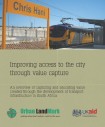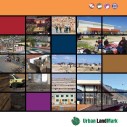Investigation of the modalities for an innovative financing mechanism for participatory natural resource management in the Bale Eco-region, Ethiopia
This study reviewed the status of natural resources and the driving forces for change, as well as past and ongoing approaches in natural resource management at the watershed scale in Ethiopia. First, we reviewed established environmental policy tools and the legal and policy framework, and determined whether innovative financing mechanisms are working in other areas with a similar context. We undertook stakeholder analyses and mapping to identify key stakeholders, and to assess their possible roles in the implementation of a sustainable financing mechanism for watershed rehabilitation.





